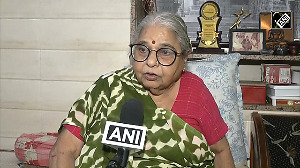
The top most stage of the Indian rocket that orbited a record 104 satellites on February 15, 2017 re-entered the earth's atmosphere and hit the North Atlantic Ocean two days ago.
The Indian Space Research Organisation (ISRO) on Tuesday, October 8, 2024, said the upper stage of the Polar Satellite Launch Vehicle - C37 (PSLV-C37) re-entered the earth's atmosphere on October 6, 2024 and the impact point was the North Atlantic Ocean.
In an historic mission on Febuary 15, 2017, the PSLV-C37 rocket orbited the country's cartography satellite Cartosat-2D as the main payload and another 103 satellites as co-passengers, namely INS-1A, INS- 1B, Al-Farabi 1, BGUSAT, DIDO-2, Nayif 1, PEASS, 88 Flock-3p satellites, and 8 Lemur-2 satellites.
It created history as the first mission to launch 104 satellites with a single vehicle.
After injecting the satellites and passivation, ISRO said the upper stage (PS4) was left at an orbit of approximately 470x 494 km size.
It was regularly tracked by the United States Space Command (USSPACECOM), formerly the North American Aerospace Defense Command (NORAD), as an object with NORAD id 42052 and its orbital altitude slowly decayed, primarily due to atmospheric drag effects, ISRO said.
Come September 2024, the ISRO System for Safe and Sustainable Space Operations Management (IS4OM) regularly monitored the orbital decay as part of its regular activities and predicted the re-entry into the atmosphere in the first week of October.
The orbit had decayed to a size of 134 x 148 km, as of 6th October, 12:45 UTC.
ISRO said the atmospheric re-entry of the rocket body within eight years of its launch is fully compliant with the international debris mitigation guidelines, in particular, the guideline of the Inter-Agency Space Debris Coordination cCommittee (IADC) that recommends limiting the post-mission orbital life of a defunct object in Low-Earth Orbit (LEO) to 25 years.
This requirement was met by properly designing a passivation sequence which lowered the orbit of PS4 -- the top most stage with two engines powered by liquid fuel -- after the injection of the payloads.
ISRO said special initiatives are undertaken to ensure that the residual orbital lifetime of the PSLV upper stages is reduced to five years or even less by actively de-orbiting them to lower altitude orbits through engine re-starts, as in PSLV-C38, PSLV-40, PSLV-C43, PSLV-C56, and PSLV-C58 missions.
'Controlled re-entry of the upper stage is also envisaged for the disposal of the upper stage in future PSLV missions,' ISRO stated.
'As part of its longstanding commitment to preserve long term sustainability of outer space activities, ISRO will continue to implement proactive measures to meet the objectives of Debris Free Space Mission by 2030.'
Venkatachari Jagannathan can be reached at venkatacharijagannathan@gmail.com










